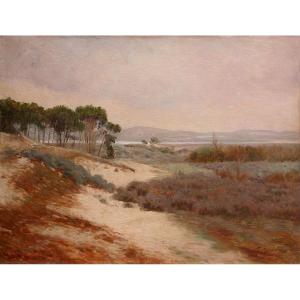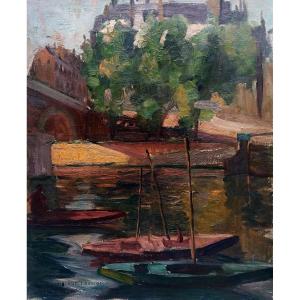Alexandre Garbell began using brushes at the age of thirteen. After studying in Moscow, he arrived in Paris in 1923 and became a student at the Académie Ranson where he studied with Roger Bissière. It is therefore part of what has been called the School of Paris. But very quickly he worked alone and demonstrated, with regard to all the groups and all the schools, an independence and a freedom which were never denied subsequently. From 1928, Garbell's work was regularly presented in Paris, in either personal or collective exhibitions. During the occupation, like other painters (Marcelle Rivier, André Lanskoy), Garbell took refuge in Mirmande where André Lhote opened a free academy. Young artists come to seek emulation from their peers and advice from their elders. This is the case with Gustav Bolin, Philibert-Charrin and Pierre Palué. Competent and generous, Garbell influenced a new generation of artists and in particular those of the young Lyon school (of which André Cottavoz was one of the most representative). In 1946, Alexandre Garbell returned to Paris where he exhibited in major galleries. From 1950, he crossed borders and exhibited abroad: in Denmark, Switzerland, England, Italy and the United States. On the occasion of the exhibition organized by the “Fine arts associates gallery” in New York in 1956, a television film was shot in the United States on the theme The painter and his work. Garbell regularly participates in important exhibitions in France and abroad: “Salon des surindépendants”, “Salon de mai” in 1950 then from 1954 to 1961; “Salon of new realities” in 1961; “Comparisons” in 1956, 1957, 1962 and 1963; also “Salon des Tuileries” and “Salon d’Automne”; “Latin lands”, “Today’s adults and young people”. Before disappearing, he will be able to see the tribute paid to him by the Framond gallery in Paris in 1970 under the title Garbell, fifteen years of painting. He died in December 1970 and is buried in Montry (Seine-et-Marne).




































 Le Magazine de PROANTIC
Le Magazine de PROANTIC TRÉSORS Magazine
TRÉSORS Magazine Rivista Artiquariato
Rivista Artiquariato